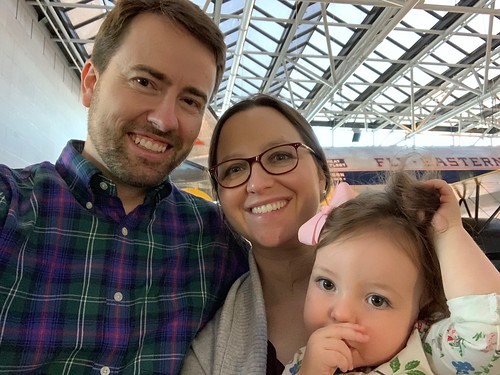“. . .there’s shortage of components at occasions particularly when we acquire
“. . .there is shortage of materials at instances specifically when we acquire a lot of circumstances. . .It may take place that we acquire quite a few cases through the day and night. The subsequent case might find us without any prepared supplies.” LHP, IDINgozi Some respondents have been in the view that the poor allocation of limited EmONC resources can also be a contributing element to the lack of important EmONC supplies and medication seasoned by some facilities. In addition, they felt that the growing volume of clientele taking advantage of your universal healthcare policy has not been matched with a corresponding increase in essential supplies.PLOS One DOI:0.37journal.pone.03920 September  25,0 Barriers to Powerful EmONC Delivery in PostConflict AfricaFurthermore, participants reported that the unequal distribution of EmONCdesignated facilities amongst PubMed ID:https://www.ncbi.nlm.nih.gov/pubmed/25339829 urban and rural regions adversely affects the delivery of excellent EmONC solutions in rural areas where majority of Burundians live. One example is within the Bujumbura Mairie province, the 4 public CEmONC facilities had been all located inside Bujumbura city. A further implication for the poor distribution of EmONC facilities was that personnel within the cities usually be overwhelmed with clients. Poor coordination of EmONC. Some respondents felt the current system of EmONC education in Burundi is not appropriately harmonised and coordinated, with diverse instruction institutions and organisations offering various varieties of training. This means that the effectiveness of the a variety of education programmes and also the competence of your trainees might vary across different locations. Furthermore, some participants highlighted important lapses in a few of the EmONC curricula presently supplied across the nation. As an illustration, some respondents felt that numerous EmONC coaching programmes lack a practical element where trainees are capable to `tryout’ the expertise they’ve learned on coaching components. They felt that most education which has been provided in the past has largely been theoretical in nature with very little or no room for sensible exercises. “Some trainings have been completed but it is not efficient; it has been theoretical training for EmONC. . .EmONC cannot be theoretical, they have to accomplish practical workouts.” NGOPolicy maker, IDI ujumbura Poor information collection and monitoring method. Participants, especially the policy makers felt that no trustworthy EmONC data collection and monitoring system exist within the nation. Some respondents acknowledged that a national EmONC require assessment was undertaken a couple of years ago while uncertainty lingers about the present status of EmONC solutions inside the country. They have been in the opinion that an JNJ-17203212 web efficient data collection and monitoring method ought to capture the normal EmONC availability and coverage indicators in addition to details on the effectiveness with the EmONC coaching programmes.Northern UgandaHuman resourcesrelated challenges, Shortage of educated personnel and demotivated personnel. Acute shortage of EmONCtrained personnel was a deficiency reported by the majority of the respondents. This meant that quite a few facilities lacked the vital manpower to successfully offer excellent EmONC solutions. Though it was significantly easier to recruit nursing assistants, nurses and clinical officers, the recruitment of midwives, common practitioners and gynaecologists was reportedly a great deal harder. This circumstance was extra precarious among facilities in rural settings. On top of that, a lot of respondents felt that the challenging function.
25,0 Barriers to Powerful EmONC Delivery in PostConflict AfricaFurthermore, participants reported that the unequal distribution of EmONCdesignated facilities amongst PubMed ID:https://www.ncbi.nlm.nih.gov/pubmed/25339829 urban and rural regions adversely affects the delivery of excellent EmONC solutions in rural areas where majority of Burundians live. One example is within the Bujumbura Mairie province, the 4 public CEmONC facilities had been all located inside Bujumbura city. A further implication for the poor distribution of EmONC facilities was that personnel within the cities usually be overwhelmed with clients. Poor coordination of EmONC. Some respondents felt the current system of EmONC education in Burundi is not appropriately harmonised and coordinated, with diverse instruction institutions and organisations offering various varieties of training. This means that the effectiveness of the a variety of education programmes and also the competence of your trainees might vary across different locations. Furthermore, some participants highlighted important lapses in a few of the EmONC curricula presently supplied across the nation. As an illustration, some respondents felt that numerous EmONC coaching programmes lack a practical element where trainees are capable to `tryout’ the expertise they’ve learned on coaching components. They felt that most education which has been provided in the past has largely been theoretical in nature with very little or no room for sensible exercises. “Some trainings have been completed but it is not efficient; it has been theoretical training for EmONC. . .EmONC cannot be theoretical, they have to accomplish practical workouts.” NGOPolicy maker, IDI ujumbura Poor information collection and monitoring method. Participants, especially the policy makers felt that no trustworthy EmONC data collection and monitoring system exist within the nation. Some respondents acknowledged that a national EmONC require assessment was undertaken a couple of years ago while uncertainty lingers about the present status of EmONC solutions inside the country. They have been in the opinion that an JNJ-17203212 web efficient data collection and monitoring method ought to capture the normal EmONC availability and coverage indicators in addition to details on the effectiveness with the EmONC coaching programmes.Northern UgandaHuman resourcesrelated challenges, Shortage of educated personnel and demotivated personnel. Acute shortage of EmONCtrained personnel was a deficiency reported by the majority of the respondents. This meant that quite a few facilities lacked the vital manpower to successfully offer excellent EmONC solutions. Though it was significantly easier to recruit nursing assistants, nurses and clinical officers, the recruitment of midwives, common practitioners and gynaecologists was reportedly a great deal harder. This circumstance was extra precarious among facilities in rural settings. On top of that, a lot of respondents felt that the challenging function.